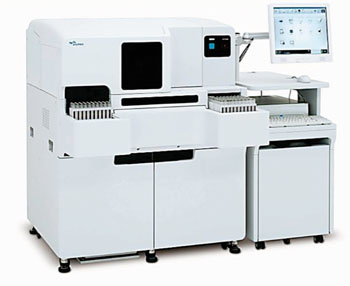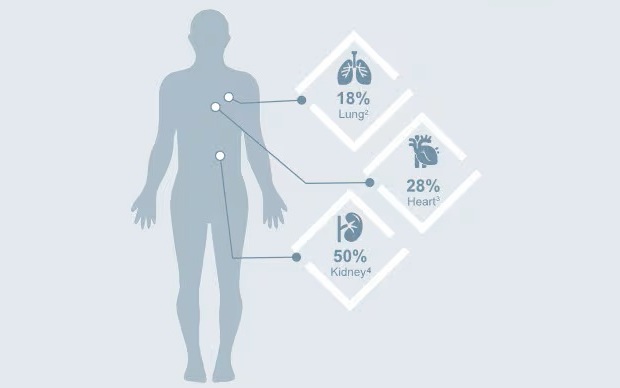Blood Test Measures Hepatic Fibrosis Progression
By LabMedica International staff writers
Posted on 21 Jan 2015
Viral hepatitis is the most prevalent infectious disease in Japan, affecting some three million people and left untreated, the condition can develop into severe illness as it progresses toward liver cell carcinoma.Posted on 21 Jan 2015
As chronic hepatitis advances toward liver cell carcinoma, the amount of fiber-rich tissue in the liver increases and hepatic function gradually declines. An important part of the treatment process for viral chronic hepatitis is determining the degree of hepatic fibrosis. The typical testing process involves taking a biopsy of the liver tissue, requiring a patient to be hospitalized because of its high invasiveness. This places a substantial burden on the patient on both the physical and economic fronts.

Image: The automated immunoassay system HISCL-5000 series (Photo courtesy of Sysmex).
A hepatic fibrosis test reagent called HISCL M2BPGi Assay Kit (Sysmex; Kobe, Japan) was developed for testing the degree of viral hepatitis-induced disease during blood testing and is to be used on automated immunoassay systems—the Sysmex HISCL-Series HISCL-5000/2000i/800. The assay requires only a blood sample to determine within just about 17 minutes the status of progression of hepatic fibrosis to chronic hepatitis and cirrhosis of the liver, which has been suspected to be a cause of hepatocellular carcinoma. The hepatic fibrosis test reagent HISCL M2BPGi Assay Kit has been approved for insurance coverage domestically as of January 1, 2015.
The assay measures Mac-2 Binding Protein (M2BP) Glycosylation isomer and uses a chemiluminescent enzyme-linked immunoassay using a two-step sandwich method. Sugar chains, the linked monosaccharides that link to the surface of a cell or a protein, are sometimes described as "cell and protein costumes." Their roles include the transmission of information specific to individual cells and intercellular communications. A glycosylation marker is a biomarker that targets structural changes in sugar changes present in glycoproteins. The product will be introduced to the domestic market with the focus on medical facilities and diagnostic centers. Introductions to Asian countries, specifically China with its large number of liver disease patients, will follow in order.
Related Links:
Sysmex














